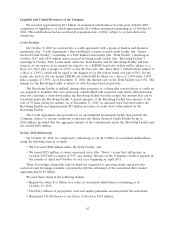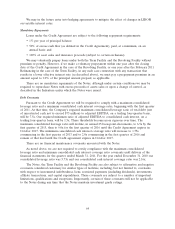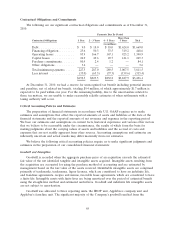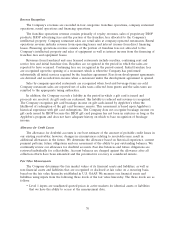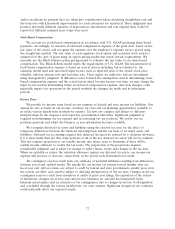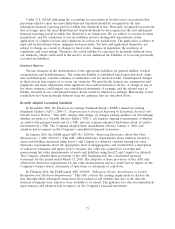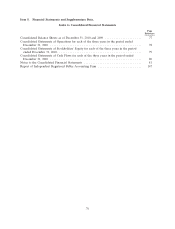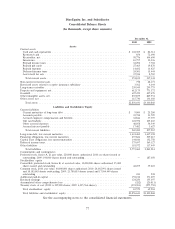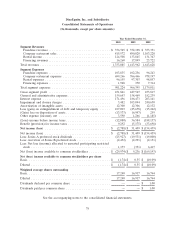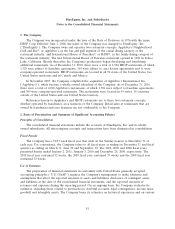IHOP 2010 Annual Report Download - page 88
Download and view the complete annual report
Please find page 88 of the 2010 IHOP annual report below. You can navigate through the pages in the report by either clicking on the pages listed below, or by using the keyword search tool below to find specific information within the annual report.and/or escalations in payment that are taken into consideration when calculating straight-line rent and
the term over which leasehold improvements for each restaurant are amortized. These judgments may
produce materially different amounts of depreciation, amortization and rent expense than would be
reported if different assumed lease terms were used.
Stock-Based Compensation
We account for stock-based compensation in accordance with U.S. GAAP governing share-based
payments. Accordingly, we measure stock-based compensation expense at the grant date, based on the
fair value of the award, and recognize the expense over the employee’s requisite service period using
the straight-line method. The fair value of each employee stock option and restricted stock award is
estimated on the date of grant using an option pricing model that meets certain requirements. We
currently use the Black-Scholes option pricing model to estimate the fair value of our share-based
compensation. The Black-Scholes model meets the requirements of U.S. GAAP. The measurement of
stock-based compensation expense is based on several criteria including, but not limited to, the
valuation model used and associated input factors, such as expected term of the award, stock price
volatility, risk free interest rate and forfeiture rate. These inputs are subjective and are determined
using management’s judgment. If differences arise between the assumptions used in determining stock-
based compensation expense and the actual factors which become known over time, we may change the
input factors used in determining future stock-based compensation expense. Any such changes could
materially impact our operations in the period in which the changes are made and in subsequent
periods.
Income Taxes
We provide for income taxes based on our estimate of federal and state income tax liabilities. Our
annual tax rate is based on our income, statutory tax rates and tax planning opportunities available to
us in the various jurisdictions in which we operate. Tax laws are complex and subject to different
interpretations by the taxpayers and respective governmental authorities. Significant judgment is
required in determining our tax expense and in evaluating our tax positions. We review our tax
positions quarterly and adjust the balances as new information becomes available.
We recognize deferred tax assets and liabilities using the enacted tax rates for the effect of
temporary differences between the financial reporting basis and the tax basis of recorded assets and
liabilities. Deferred tax accounting requires that deferred tax assets be reduced by a valuation allowance
if it is more likely than not that some portions or all of the net deferred tax assets will not be realized.
This test requires projection of our taxable income into future years to determine if there will be
taxable income sufficient to realize the tax assets. The preparation of the projections requires
considerable judgment and is subject to change to reflect future events and changes in the tax laws.
When we establish or reduce the valuation allowance against our deferred tax assets, our income tax
expense will increase or decrease, respectively, in the period such determination is made.
Tax contingency reserves result from our estimates of potential liabilities resulting from differences
between actual and audited results. We usually file our income tax returns several months after our
fiscal year end. All tax returns are subject to audit by federal and state governments, usually years after
the returns are filed, and could be subject to differing interpretation of the tax laws. Changes in the tax
contingency reserves result from resolution of audits of prior year filings, the expiration of the statute
of limitations, changes in tax laws and current year estimates for asserted and unasserted items.
Inherent uncertainties exist in estimates of tax contingencies due to changes in tax law, both legislated
and concluded through the various jurisdictions’ tax court systems. Significant changes in our estimates
could materially affect our reported results.
72


